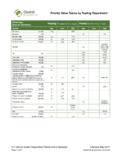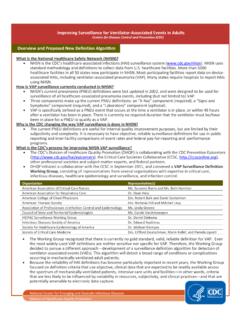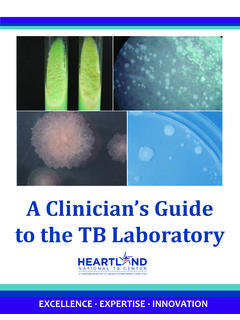Transcription of TSUMURA Kakkonto Extract Granules for Ethical Use
1 TSUMURA & Co. 1. Revised: August 2007 (7th version) Standard Commodity Classification No. of Japan 875200.. - Kampo-preparation- TSUMURA Kakkonto Extract Granules for Ethical Use Storage Approval No. (61AM)3292. Store in light-resistant, air-tight con- Date of listing in the NHI reimbursement price October 1986. tainers. Date of initial marketing in Japan October 1986. Expiration date Use before the expiration date indi- cated on the container and the outer package. DESCRIPTION PRECAUTIONS. g of TSUMURA Kakkonto Extract Granules 1.
2 Careful administration (TJ-1 should be administered (hereafter TJ-1) contains g of a dried Extract of with care in the following patients.). the following mixed crude drugs. (1) Patients in a period of weakness after disease or with JP Pueraria Root .. g greatly declined constitution [Adverse reactions are JP Jujube .. g likely to occur, and the symptoms may be aggravated.]. JP Ephedra Herb .. g (2) Patients with an extremely weak gastrointestinal tract JP Glycyrrhiza .. g Composition [Anorexia, epigastric distress, nausea, vomiting, etc.]
3 JP Cinnamon Bark .. g JP Peony Root .. g may occur.]. JP Ginger .. g (3) Patients with anorexia, nausea or vomiting [These (JP: The Japanese Pharma copoeia) symptoms may be aggravated.]. Inactive ingredients JP Magnesium Stearate (4) Patients showing a remarkable tendency of sweating JP Lactose Hydrate [Excess sweating and/or generalized weakness may Sucrose Esters of Fatty Acids occur.]. Dosage form Granules (5) Patients with cardiovascular disorders including angina Color Light brown pectoris and myocardial infarction, etc.
4 Or those with a Description Smell Characteristic smell history of such disorders. Taste Pungent (6) Patients with severe hypertension ID code TSUMURA /1 (7) Patients with severe renal dysfunction (8) Patients with dysuria INDICATIONS (9) Patients with hyperthyroidism TJ-1 is indicated for the relief of the following symptoms of [(5)-(9): These disease and symptoms may be aggravated.]. those patients with comparatively strong constitution having headache, fever, rigor, and shoulder stiffness without sponta- 2. Important Precautions neous sweating: (1) When TJ-1 is used, the patient's SHO (constitu- Common cold, coryza, the initial stage of febrile diseases, in- tion/symptoms) should be taken into account.
5 The flammatory diseases (conjunctivitis, keratitis, otitis media, ton- patient's progress should be carefully monitored, and if sillitis, mastitis, and lymphadenitis), shoulder stiffness, neural- no improvement in symptoms/findings is observed, gia in the upper body, and urticaria. continuous treatment should be avoided. (2) Since TJ-1 contains Glycyrrhiza, careful attention DOSAGE AND ADMINISTRATION should be paid to the serum potassium level, blood The usual adult dose is g/day orally in 2 or 3 divided doses pressure, etc.
6 , and if any abnormality is observed, ad- before or between meals. The dosage may be adjusted ac- ministration should be discontinued. cording to the patient's age and body weight, and symptoms. (3) When TJ-1 is coadministered with other Kam- po-preparations (Japanese traditional herbal medi- cines), etc., attention should be paid to the duplication of the contained crude drugs. 2 TSUMURA & Co. SHO: The term SHO refers to a particular pathological 3) Hepatic dysfunction and jaundice: Hepatic dys- status of a patient evaluated by the Kampo diagnosis, and is function and/or jaundice with elevation of AST.
7 Patterned according to the patient's constitution, symp- (GOT), ALT (GPT), Al-P and -GTP or other toms, etc. Kampo-preparations (Japanese traditional her- symptoms may occur. The patient should be bal medicines) should be used after confirmation that it is carefully monitored for abnormal findings. Ad- suitable for the identified SHO of the patient. ministration should be discontinued and appropriate therapeutic measures should be taken, if abnormali- 3. Drug Interactions ties are observed. Precautions for coadministration (TJ-1 should be ad- (2) Other adverse reactions ministered with care when coadministered with the fol- Incidence unknown lowing drugs.)
8 Hypersensitivity Rash, Redness, Pruritus, etc. Note 1). Signs, Symptoms, Mechanism and Drugs Autonomic Insomnia, Excess sweating, Tachycardia, Palpitation, and Treatment Risk Factors Generalized weakness, Mental excitation, etc. (1) Preparations contain- Insomnia, excessive An enhancement of ing Ephedra Herb sweating, tachycar- the sympathetic Gastrointestinal Anorexia, Epigastric distress, Nausea, Vomiting, etc. (2) Preparations contain- dia, palpitation, gen- nerve-stimulating ac- Urinary Urination disorder, etc.
9 Ing ephedrine-related eral weakness, men- tion has been sug- Note 1) If such symptoms are observed, administration should compounds tal excitation, etc. are gested. be discontinued. (3) Monoamine oxidase likely to occur. In (MAO) inhibitors such cases, TJ-1. (4) Thyroid preparations should be adminis- 5. Use in the Elderly Thyroxine tered with care by Because elderly patients often have reduced physiological Liothyronine measures such as function, careful supervision and measures such as reduc- (5) Catecholamine prepa- reducing the dosage.
10 Ing the dose are recommended. rations Epinephrine Isoprenaline 6. Use during Pregnancy, Delivery or Lactation (6) Xanthine preparations The safety of TJ-1 in pregnant women has not been estab- Theophylline lished. Therefore, TJ-1 should be used in pregnant wom- Diprophylline en, women who may possibly be pregnant only if the ex- (1) Preparations contain- Pseudoaldosteronism Since glycyrrhizinic pected therapeutic benefits outweigh the possible risks as- ing Glycyrrhiza is likely to occur. acid has an accelerat- sociated with treatment.
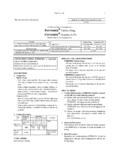

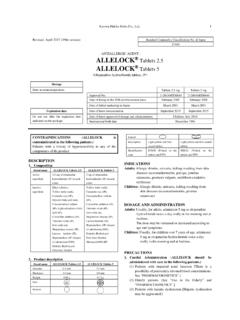
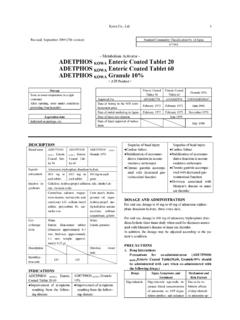

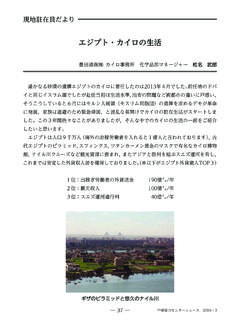





![Pneumonia (Ventilator-associated [VAP] and non …](/cache/preview/d/3/6/5/6/9/b/6/thumb-d36569b6dc8a7d8c6714d2f268ee79b7.jpg)
